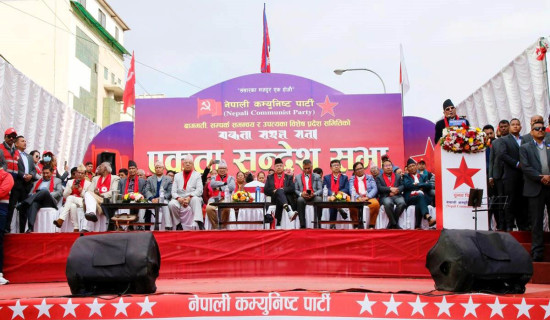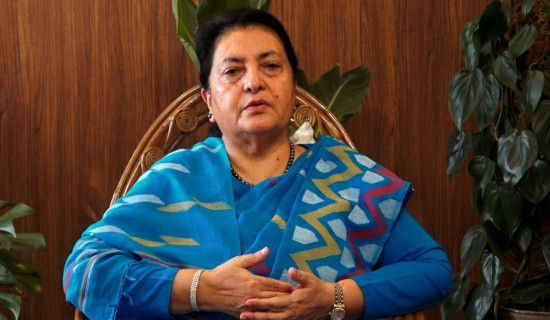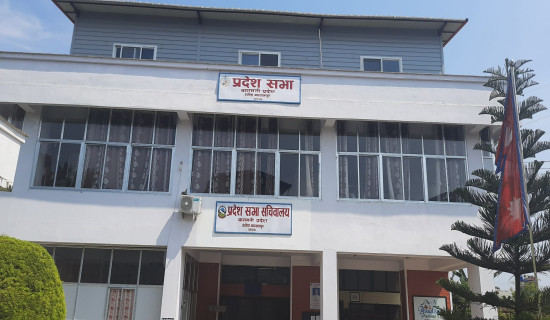- Saturday, 20 December 2025
Bagar-Kheti To Ensure Food Security
Bagar-Kheti, also known as "Baluwa Kheti" in Nepal, has gained popularity in recent decades, particularly in the Tarai region. It serves as an alternative form of agriculture for landless communities, enhancing their food security. Nearly 3.5 million rural people are food insecure, and 1.3 million households are reported as landless or land-poor across the country. Farmers typically prepare fields and cultivate vegetables in ditches on riverbanks after the post-monsoon season, a practice with a history spanning almost three decades, originating from nomadic farming methods. Many farmers living close to rivers, along with landless individuals, suffer from food insecurity due to limited land for cultivation, unproductive soils, low yields per unit of land, frequent flash floods, droughts, and other impacts of climate change. Riverbeds in the region are annually flooded during extreme weather events, rendering them largely unsuitable for agriculture and other purposes. Consequently, these fallow lands near riverbeds are typically unclaimed and left uncultivated.
However, these lands can be used to cultivate watermelon, bottle gourd, cucumber, summer squash, pumpkin, and sweet potato along the riverbanks. In Tarai landless, land-poor, and severely flood-affected farmers lease the riverbeds for cultivation during the post-monsoon dry season (October to May). Some farmers also grow chilies, beans, tomatoes, and other high-value vegetables. In the Tarai, each farmer makes an initial investment of Rs.1,000 to cultivate a one-katha (338.5 m2) plot, which is large enough to support a family without requiring outside labor. Riverbed farming does not require irrigation, tillage, or energy inputs beyond human labour and generates zero waste that is not recycled on-farm. Riverbed farming is a low-environmental-impact, easy-to-learn, and cost-effective technology. Whereas systems of planting, the majority of farmers choose either the pit or the ditch system of planting.
Planting systems
Starting closest to the water's edge, crops are planted in rows oriented according to the prevailing wind direction. For the pit system, pits of 0.5 m in diameter are dug 1 m deep and 1 to 3 metres apart, depending on the crops, and planted with multiple seeds, the weakest of which are thinned out.
To use the ditch system, a trench 1 m deep is dug along the row, with 1 to 2 m of space between rows for gourd groups. Seeds are planted or spaced 0.5 m to 1 m apart in the ditch. A seed rate varies according to the crops to be grown. In general, for cucumber 100 g, sponge gourd and ridge gourd 300 g, and bitter gourd and bottle gourd 400 g in one Katha area, The sowing of seed is generally done for early crops in the first and second weeks of October, and sometimes late sowing is done by the first week of November. The seeds are sown at a distance of 45–60 cm in the trench at a depth of 3–4 cm.
Ensure food security
As reducing food insecurity continues to be a major public policy challenge in developing countries, the practices of Bagar-Kheti (riverbed farming) present a viable way forward. At least 20 per cent of the households in the Tarai, the plains of southern Nepal, do not own land. To make a living, these households commonly rely on sharecropping and low-paid off-farm day labor. The approach described here allows these farmers to utilise the large areas of fallow land near riverbeds, which are normally unclaimed and uncultivated.
Vegetable nursery raising is possible even in heavily sand-deposited areas by supporting micro-irrigation (Shallow Tube-Well), where other crops are impracticable for cultivation. In some areas, inter-farming is practiced, providing extra benefits to farm families. Since the lands near riverbeds have alluvial soils and sufficient moisture, they are suitable for seasonal vegetable cultivation during the dry season. For landless and land-poor households to farm these riverbed areas, they need access to suitable plots, agricultural inputs, and training. Watermelon, muskmelon, pointed gourd, cucumber, sweet potato, sugarcane, and other creeping vegetables have been successfully grown by reclaiming heavily sand-deposited riverbed soils and small water-flowing areas.
Bagar vegetable farming has shown encouraging results in the Kanchanpur, Sunsari, and Kailali districts. It has been successfully implemented on about 384 hectares (60 hectares in Sunsari, 280 hectares in Kailali, and 44 hectares in Kanchanpur) of river-damaged farmlands. The production is used both for home consumption and surplus sales at local markets, providing technical and financial support to uplift the livelihoods of these people.
By utilising an under-exploited resource and enhancing farmers' production skills on marginal soils, leasehold riverbed vegetable farming increases marginal farmers' options for sustainably coping with the effects of climate change. Inhabitants of the Tarai face challenges to their food security similar to those faced by smallholders around the world.
Production pressure on arable land is increasing due to population growth and increasingly erratic hydrological cycles caused by climate change.
Bagar-Kheti is not a new practice globally, though it is not widely familiar in Nepal. It is a source of daily sustenance, food security, and income for landless communities, especially in Tarai. Agriculture is the main source of livelihood in rural Nepal, with almost two-thirds of the population dependent on it. However, nearly 1.3 million people are landless.
Bagar Kheti provides an alternative livelihood source for these people, improving family nutrition, income, and food security, especially in the Tarai region.
The Government of Nepal, along with national and international agencies, including NGOs, has successfully implemented many examples of Bagar Kheti from east to west Tarai. Based on these successes, it needs to be further expanded to other parts of the country as appropriate.
Cucurbits are gaining popularity in the riverbeds among poor and marginalised farmers. Thus, it is economically, environmentally, socially, and technologically sustainable in the Tarai, providing options for marginalised farming communities to adapt to the impacts of climate change. Bagar-Kheti is an alternative form of livelihood for landless farm communities in the Tarai, helping with food security, family diet, income generation, and recreation.
(The author is a team leader for the mid-term review at the Nepal Urban Governance and Infrastructure Project funded by the World Bank.)

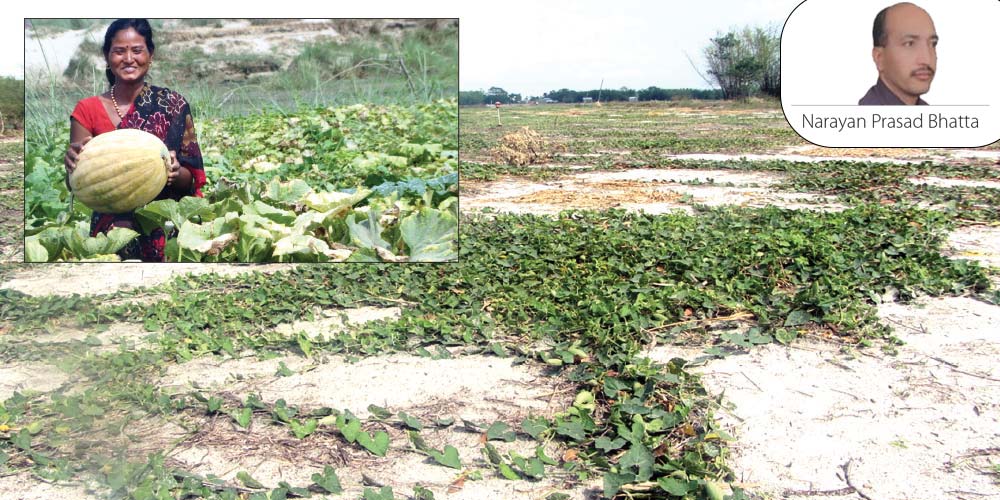







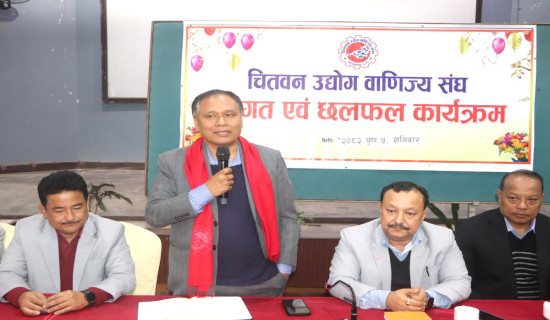
-original-thumb.jpg)
-original-thumb.jpg)
